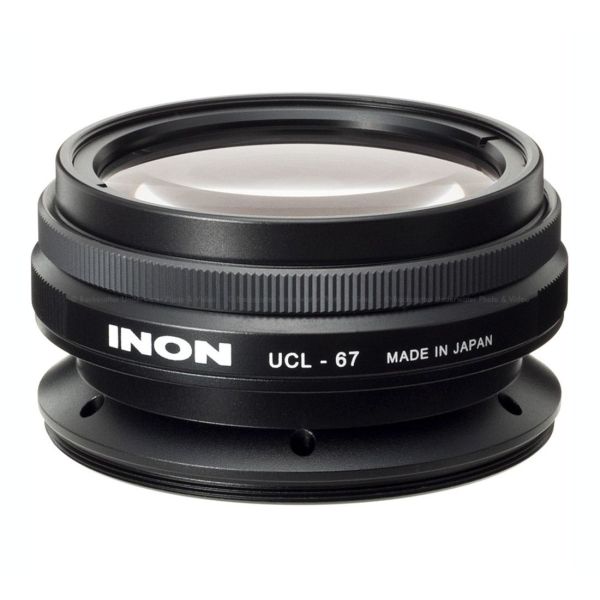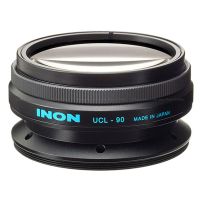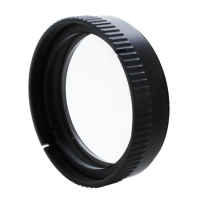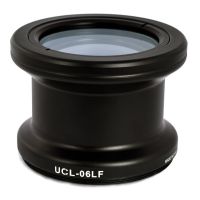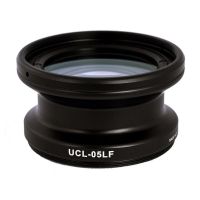Inon UCL-67 M67 Underwater Close-up Macro Lens +15
Inon UCL-67 M67 Underwater Close-up Macro Lens +15
The UCL-67 M67 underwater close-up lens is designed to deliver high magnification yet superior image quality best suited to full frame SLR macro lenses of focal length 60mm - 100mm with comfortable long working distance enabling easy lighting. The lens also supports mirrorless as well as compact system.
Compatible Lens
- 60mm-100mm range macro lens for full-frame SLR (*1)
- 40mm-60mm range macro lens exclusively designed for APS-C (*1)
- 45mm-60mm range macro lens (*1), standard zoom lens (*2) for Micro Four Thirds
- Compact digital camera with maximum optical zoom 5x or less (*2)
(*1) Vignetting may be observed depends on the distance between master lens and lens port glass and/or UCL-67 and lens port glass.
(*2) Only usable when the focal length is between 60mm and 100mm range at 35mm film equivalent. Beyond this range, there will be vignetting at the wide side and deteriorated image quality at the telephoto side.
Powerful magnification with focal length 67mm (+15 diopter). Maximum magnification of the UCL-67 with range of 100mm macro lens for full frame SLR is 2.76x (area ratio: 7.65x) at the minimum focusing distance. (*3)
While the UCL-67 delivers high magnification, it still offers long working distance. When using with 100mm range macro lens for SLR, working distance is 52mm (83.4mm from housing port surface) at minimum focusing distance (*3).
Together with its compact size, the lens supports friendly lighting even at minimum focusing distance.
(*3) When using for AF-S VR Micro-Nikkor 105mm f/2.8G IF-ED.
The lens is consists of 4 elements in 3 groups using high refractive index glass to accommodate with a macro lens for full-frame digital SLR with compact body yet delivering high magnification and superior image quality.
Employing achromatic lens effectively suppresses chromatic aberration and anti-reflection coating on all surfaces suppresses flare/ghost. Designed sole use underwater to provide effectively suppressed aberrations in all focal range and unparalleled high quality image on any supported shooting range. (*4)
(*4) This product is designed for underwater use only. Using on land will have less magnification, distortion, vignetting etc..
Optional "Lens Adapter Ring for UCL-67" is attached on the M65 screw thread of the UCL-67 allowing to stack INON M67 series, "UCL-165M67"/"UCL-330" on the front side of the UCL-67 to support even higher magnification for super macro imaging needs. (*5)
(*5) Other higher magnification close-up lens, "UCL-100M67" and "UCL-67 M67" are not usable as those combinations will have significantly degrade image quality.
Lens mount is highly versatile screw type "M67 Mount
Optional "M67 Flip Mount Adapter for UCL-67" is available to replace with original M67 screw mount to use the lens on a flip mount such as Nauticam flip lens holder etc. This adapter allows the UCL-67 to locate close to housing lens port.(*6) (*7)
(*6) Not compatible with a flip lens holder with 57mm or smaller inner diameter such as from SAGA.
(*7) Original lens mount is replaceable by a customer using precision Philips screw driver to unscrew fixing screws.
TIPS When using a close-up lens
- Depending on housing, shooting distance, angle of view etc., the lens may block the built-in flash light from illuminating the entire image. In such cases it is recommended to shoot with an external strobe or flashlight.
- A close-up lens provides maximum magnification at zoom telephoto end.
- Generally, a close-up lens shortens the camera’s close focusing distance. With this product, you can place your camera closer to a subject, achieving a larger image. On the other hand, depending on zoom or aperture setting, it may be more difficult to obtain complete depth of field on a distant subject.
- Stacking multiple lenses may cause vignetting at zoom wide end. As you stack more lens, focusing distance gets short and depth of field gets shallow as well.

